Cuba is a polyhedric island full to the brim of beauties but and paradoxes.
In this list, I put black on white for you my 10 Favourite Places in North-West Cuba, both cultural and natural, and give you some impressions to help you get ready for your upcoming trip.
I tried to strictly stick only to places, but be aware that those, are only half part of what makes Cuba such a unique destination as it is today.
A cumbersome history, incessant music, frenetic dances, emotions, and above everything, its people, are together the factor number one that makes Cuba a destination to see at least once in life.
Life in Cuba is slow. With an extremely under-spread Internet and relatively low social inequality, social contacts and the sense of community are still central in the life of the island.
While on the road, independently on the place; what I felt was solidarity. It was helpfulness. It was kindness.
So, while reading this list of awesome places to visit, try to keep in mind that the social context in which you’re gonna be immersed if you’ll choose to visit the island, will without any doubt enhance your Cuban experience and set it apart from all others experiences you ever tried before.
Ready, GO!
1. Havana Vieja
Colorful colonial houses and decadent baroque and neoclassical facades, picture Old Havana (Havana Vieja in Spanish) as a place where time seems to have stopped a century ago.
As a Unesco World Heritage Site, the quartier of Havana Vieja is the core of the first Spanish settlements on the island and for centuries has been the pulsing heart of the New World’s commerce with the old continent. In fact, Spanish galleons for centuries have been passing from here with booties and goods before making the route to the motherland.
Deteriorated palaces, churches, balconies, courtyards, and alleys are nowadays just the frame of what Havana Vieja truly has to offer: overflowing life and Cuban culture!
From the Paseo del Prado, where street artists linger around, to the Great Theater of Havana and the lively Calle Obispo, the fortresses, museums, and palaces; the Old Havana offers culture for all tastes.
In the narrow alleys and the bars, musicians everywhere play live music of Salsa, Bachata, Merengue, and traditional Cuban music. If you feel the rhythm shaking from within you, just start moving (with those catchy rhythms it’s very hard not to, you should have seen my dad!) and in no time you’ll find somebody asking you for a dance.
All in all, Old Havana is perhaps the most touristy spot in the whole city, but definitely, it’s not overcrowded and ruined by it. We spent there half a day and saw most of the hotspots, moving only by feet. Overall, it an undoubtedly incredible experience and jump in the past.
A note from my experience: Havana Vieja has perhaps the highest prices of all Havana but doesn’t expect higher quality for foods (in general as a not-so-picky Italian, I can say that in Cuba it’s very hard – often straightforward impossible – to find good/acceptable food and variety is extremely limited).
Furthermore, on the streets, it’s very common to be stopped by beggars, restaurant promoters, and scam artists, trying to constantly offer you things (or asking for money). If you’re not interested, your best bet is to keep walking and ignoring them.
Remember the golden rule in Cuba: if you start talking, they’ll never let you go! Cubans like to talk, no matter what, and that’s the beautiful side of Cuba, although on some occasions may also be stressful 😉
2. El Capitolio – Havana
On the border between Old Havana and Central Havana stays one of the most iconic buildings of the whole city: the National Capitol (“El Capitolio” in Spanish).
Inspired by Washington’s Capitol and Paris’ Pantheon, the Cuban Capitolio was built between in the 1926-1929 after-WWI period, when Cuba was enjoying a great inflow of money deriving from its thriving sugar export. Today, the Capitol is home of the Cuba National Assembly and a must-see for any tourist visiting Havana.
Decorated halls, Italian statues, antique furniture, tall columns, oil pantings, international art and ornaments from the ages are but a few of the details of this monumental architectonic feat.
Personally, seeing this immense limestone building, so renovated and polished in between the decadent quartiers of Havana, made me reflect about the difference ages this island has passed, marked by seasons of extreme wealth and poverty alike.
In the plaza front of the Capitolio is also one of the main stop of the Hop-on Hop-Off Tourist Bus, one of the best way to visit the city and also perhaps the cheapest way to move around.
3. Havana Club – Museum of Rum
Located in Havana Vieja, this museum was one of the highlights of our visit to the city.
Entirely built and sponsored by Havana Club, the “Museo del Ron” is an historical journey into Cuban’s history and through the centenary refining process that lead to the creation of one of the most known and consumed spirits in the world today: RUM!
The museums offers guided tours in most European language approx. every two hours and the entrance costs only 7 CUC (~6 Euro) with guide included. The visit lasts slightly more than an hour.
Personally, I am the kind of person that likes unconventional museums. I love aquiring new knowledge through interactions, surprise and entertainment; and not many museum can achieve that!
What I loved about the Museum of Rum is that the experience is very social (you’ll meet visitors of your own native country so it’s even easier to socialize), interactive (you can touch things with hand and move around the spaces) while also being informative and entertaining.
The guides are professional but also quiet funny, to be expected when doing a tour about any alcoholic beverage!
Once learned all the preparation process of rum, its history, varieties and cultural meaning, the visit ends with a rum tasting! (after one hour through the museum, you’ll crave for a taste, believe me!).
Within the museum, is also an Havana Club shop with great rum varieties and competitive prices: if you plan to bring back some bottle home, think about getting it here 😉
Museum of Rum – Minigallery
3. El Malecon – Havana
Iconic coastline roadway, symbol of Havana and Cuba, the Malecon is the perfect place for escaping the hustle-and-bustle of center Havana and enjoy a relaxing walk by the sea at day.
Built-in 1901 during US military-rule, the broad esplanade of the Malecon and its seawall extends for a total of 8km, starting from the Almendare’s river mouth, passing north of Vedado, Habana Central, and ending at the harbour of Havana Vieja.
Located half-way of the Malecon, and of significant importance is the Monument to the Victims of USS Maine, an American battleship that exploded in 1898 which has been used as a pretext to start the American-Spanish war and as an initial excuse for expanding American hegemony on the Cuban island at the beginning of the 20th century.
Between the other highlights on the Malecon, we find the renowned Hotel National and the Dignity Square which honours the Cuban martyr and national hero Josè Martì (the writer that inspired Fidel Castro and Che Guevara to make the revolution).
Sunsets at the Malecon are extremely picturesque, with the colorful houses watching the sun diving into the sea-horizon, and a must-see at least once if you’re staying some days in Havana.
In the nights (and especially on Saturdays and Sundays) the Malecon comes alive with concerts, entertainers, artists, and street-food vendors. The atmosphere is always festive and it’s an optimal place to mingle with locals and get to know more about local culture while dancing and having fun.
5. Plaza de la Revoluciòn – Havana
With its 72.000², Plaza de la Revoluciòn (Revolution Square) is an impressive tribute to the heroes of the revolution (Che Guevara, Fidel Castro and Josè Martì) and is the 31th largest city square in the world.
Located at 15 minutes walking distance from Vedado, the square boosts a star-shaped 109m-tall granite memorial tower with a statue of Josè Martì at the bottom. It is the World’s largest monument to a writer in the world.
Opposite of it, on the other side of the gigantic square, are two buildings decorated with the steel-made faces and emblematic mottos of Che Guevara and Fidel Castro.
The concrete square is truly enourmous and there’s no place shaded shelter around, so my suggestion is to avoid coming here in the warmer hours of the day. The touristic Hop-in Hop-out Havana Bus stops right on the plaza, making the connection to the city centre easy and convenient. Definitely, a Must-See in Havana!
6. Vinales National Park
Moving three hours away from Havana by car, on the far-west side of Cuba is the Vinales National Park; an emerald valley home of a myriad of tobacco and coffee plantations and UNESCO World Heritage Site since 1999.
Vinales, the central touristic village, is an extremely small village of ~27.000 people. Not reached by modernity, visiting Vinales is experiencing a journey through time where the local lifestyle still follows long gone customs and traditions.
The park is mainly famous for its “Mogotes”, unique mountain formations that like limestone boats seem to float on the surrounding sea of shockingly green plantations.
Still, the park has much more to offer: millenary caves (Indian Cave, St. Thomas Cave, Cava de la Vaca), the Mural of Prehistory, the tobacco plantations (where you can learn everything about how cigars are made), and an overall stunning nature where is amazing to walk, or even better, horse ride.
From Havana, there are day-trips to Vinales but to fully enjoy the beauty of this out-of-the-world place I would suggest staying between 3-4 nights if you’re not in a hurry.
I and my dad got a taxi compartido (shared taxi) from Havana to Vinales for 25CUC (23 Euro) each (if you reserve at least 3 days ahead, you could also come by Viazul Bus which costs only 12CUC – 10Euro). We stayed in a Casa Part
If you come with a regular bus or taxi and the driver is honest, they should stop on the highway at a designated rest stop where government officials will give you information about visiting the area and all the tour options for free. Same in Vinales, most tourists get a government-sponsored introduction on the area and how not to overpay for things.
Vinales in general is cheaper than other places in Cuba, expect to pay 1CUC for a mojito (0,90Euro) and 5CUC (4,50 Euros) for a large meal in a restaurant. At the main square, is a tiny bus/taxi station where you can get transportation to your next destination, but also here be sure to reserve ahead of time (speaking Spanish helps A LOT!).
Vinales – Minigallery
7. Cayo Levisa
My favorite place in Cuba. Cayo Levisa is a small paradise-like cay off the North-West Coast of Cuba, about 80 minutes from Vinales.
Me and my dad decided to come here for a day trip for which we paid 37CUC each (~34Euro), but on the island is also a small hotel (Hotel Cayo Levisa) which makes a nice option if you’re willing to spend more time relaxing by the beach (it consists of only 20 cottages).
What is so special about Cayo Levisa is that it’s a small island entirely uncontaminated where nature is splendidly untouched. This little cay boasts 3km of white sand beaches and a mangrove forest.
The volume of tourists that come here is extremely low, with only two 40ppl boats coming here in the morning and leaving at sunset. Cayo Levisa is that imaginary dream-island that you always see on postcards!
The contrast of the whitest sand I’ve ever seen against the crystal clear waters, the peace, the sun, and the intertwining art of the mangrove trees just left me speechless.
A small beach bar in the center of the cay had me covered too with conveniently-priced cocktails and cold beer to make my heavenly picture all the more enjoyable.
The tour ticket from Vinales includes Bus and Boat ride, access to the island and its structures (all sunbeds and beach umbrellas around the island are free), and the most awesome buffet lunch we had in Cuba (where food was actually tasty!).
If you plan to visit Vinales, do yourself a favor and stay one more night just to visit Cayo Levisa, it’s totally worth it.
Cayo Levisa – Minigallery
8. Trinidad
The city of creativity.
At 5 hours drive from Havana (and 8 hours from Vinales – what we did) is Trinidad, an entirely preserved settlement from Spanish colonial times and an additional Unesco World Heritage site in Cuba since 1988.
Trinidad is a city that breathes art: be it painting, music, or dances, the city feels vibrant and alive every day. Cars are forbidden to enter the old city center which makes the colorful streets of Trinidad feel human-sized and ideal for strolling around. The best way to know the city is just getting lost in it (streets are a grid, so easy to find your way after).
What you can find in Trinidad is colonial art, artisan workshops, countless art galleries, street artists, salsa classes, pulsing nightlife every night, “Vida y Movida” (life and movement).
Having made its fortune with sugar exports at the back of the 19th century, Trinidad was hosting over 40 sugar mills at its peak (some of which are still open today) which forced Spanish conquerors to import thousands of African slaves to the island to fulfill the workforce demand.
Nowadays, the influence of African culture is more visible here than anywhere else, both in religious terms (the local religion La Santeria is a mix of Christian and African belief), rhythms (drums are widely utilized in Cuban Music), and decorative arts.
Overall, in recent years the city has been under constant renovation to maintain the original colors and architectures of colonial buildings and this gives it a different feel compared to Havana (where houses feel more decadent).
Last but not least, Trinidad is an excellent starting-spot for day-trips to surrounding waterfalls and sugar plantations or the nearby cities of Cienfuegos and Santa Clara.
Trinidad – Minigallery
9. Playa Ancón
Just 15 minutes of the car away from Trinidad, driving toward the coast (or even cycling if you’re into it) is Playa Ancòn.
Conveniently located, vast, and spot-clean, Playa Ancòn is a typical Caribbean Beach with an 80’s feel to it. Hawaiian-style beach umbrellas, a couple of beach volleyball fields, chiringuitos (small beach kiosks), and non-exaggerated crowd affluence; make this spot the perfect place to chill and take a break from visiting Trinidad or Cienfuegos.
There is only one large hotel on the whole beach, extremely outdated but may be worth a short 10-minutes visit if you want to feel how a hotel of the ’50s feel like (it feels like an old movie!). We got a lunch-buffet from the restaurant and it was one of the most disgusting experiences ever, but hey, at least they had Wi-Fi!
We payed a taxi from Trinidad and back 18CUC (16Euro): the driver picked us up at our Airbnb, dropped us at the beach and came back to get us at the time we asked for.
10. Varadero
Touristy, touristy, touristy Varadero. The most touristic beach on this list and the whole of Cuba without any doubt, the destination for sea-lovers.
Varadero is a tourist destination couple of hours east of Havana for those tourists who just wants to enjoy the crystal clear the Caribbean Sea and nothing else.
The whole Varadero is a small peninsula of 11km with a beach of the same length. In the first 4km is the small village of Varadero where locals reside and you may find Airbnbs or Private Homes to rent (Casas Particulares) as well as shops and restaurants.
The remaining 7km are entirely covered by giant mostly-old-fashioned hotels from major hotel chains. With my dad we took a Hop-on Hop-off bus to visit Varadero and, although the price is convenient to move around (works for the whole day), there’s not much to see.
Hotels are cathedrals in the desert, with nothing around but other hotels; mastodontic and mostly aged concrete constructions sitting still, under the Cuban scorching sun.
If your plan is just relaxing, socializing and going to the beach you’ll love Varadero, the beach is unending and plenty of people (mostly tourists) of all kinds. For full disclosure, know also that if you’ll get a rainy day there’s virtually nothing to do there, so better plan your schedule here according to the weather forecast.
Restaurants are a bit of a sad note, as they mostly sell all the same distasteful (unflavoured) Cuban dishes. Luckily there are few exceptions.
What I can totally recommend (and not only because I’m Italian) is the Italian restaurant “Nonna Tina” (which we assaulted for 3 days in a row) where you can find Authentic Italian Pizza and Pasta (the queue for entering can reach 3 hours, when we were there we found hungry Italians from every region just praying for some good food).
Also, Factoria 41 is an interesting spot for beer lovers, where you can find good and cheap home-made draft beer (extremely rare in Cuba) in jumbo-sizes (over 5L!!!).
Conclusion
Did you find the article useful? Do you have any question or is there some information you believe should be in this guide?
Leave a comment below to get in touch! 🙂
Cuba Travel Guide
Content Summary
1) Top 10 Best Attractions of North-West Cuba
2) Cuba: Where to Stay and How to Move Around
3) Cuba: Local Currencies and the Budget
Cuba: How to Connect to the Internet
First, Short Info! Let's start with the biggest concern: is Internet available in Cuba? Short answer: Yes. Long answer: yes but it's slightly complicated. Not for nothing, Cuba is indeed famed as one of the least connected countries in the world. Although improvements...
Cuba: 10 Curious Facts you Didn’t Know about Cuba
Cuba is safe, people talk a lot, Salsa is everywhere, there are two currencies.... facts that you may have already heard... In this list some unusual curiosities that will make you re-think about your image of Cuba! Ready,GO! 1. The National Sport of Cuba is:...
Cuba: Where to Stay and How to Move Around?
The Hotspots Map Where to Stay in Cuba? Private Homes! As the island just started to open itself to tourism a few years ago, accommodation (and transportation) infrastructures for tourists are still under-developed and relatively scarce. Nevertheless, in...
Cuba: Local Currencies and the Budget
Cuba, How much do you cost Me? In this article, I will first introduce you to the Cuban double currency (and how to tell them apart!) and afterwards I’ll honestly bring you through all the expenses I incurred into, during my 14-days trip in North-West Cuba with my...






































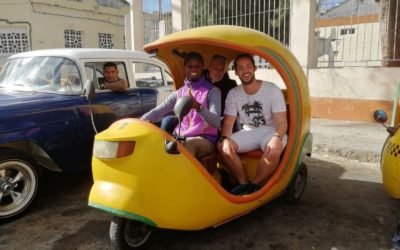
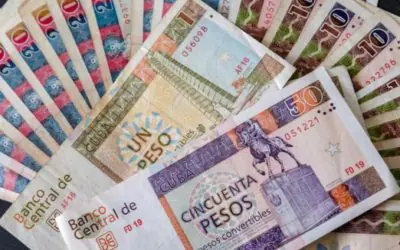
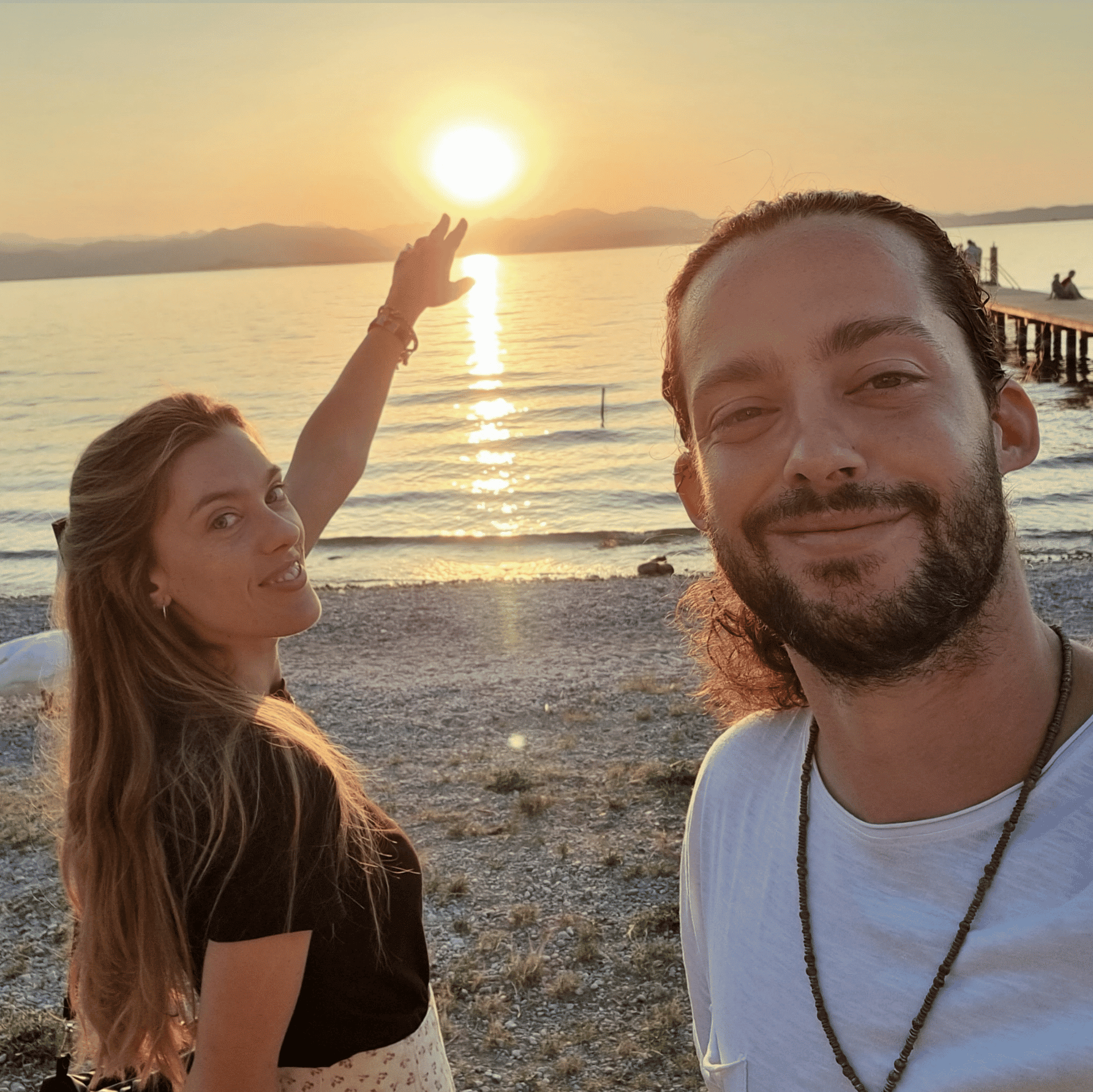
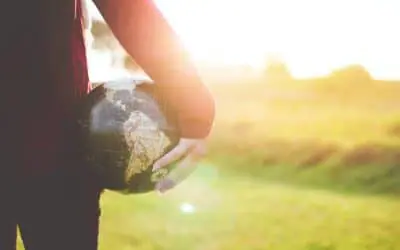

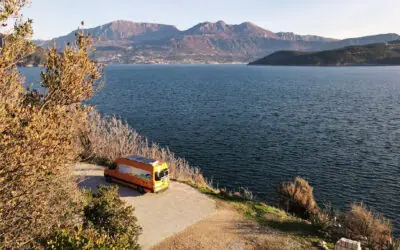

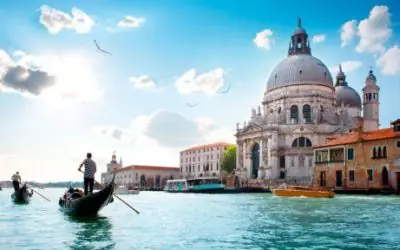

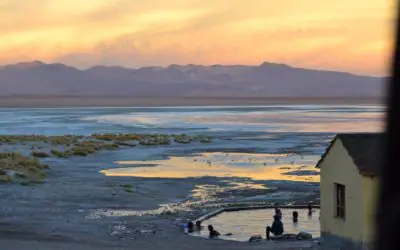
0 Comments